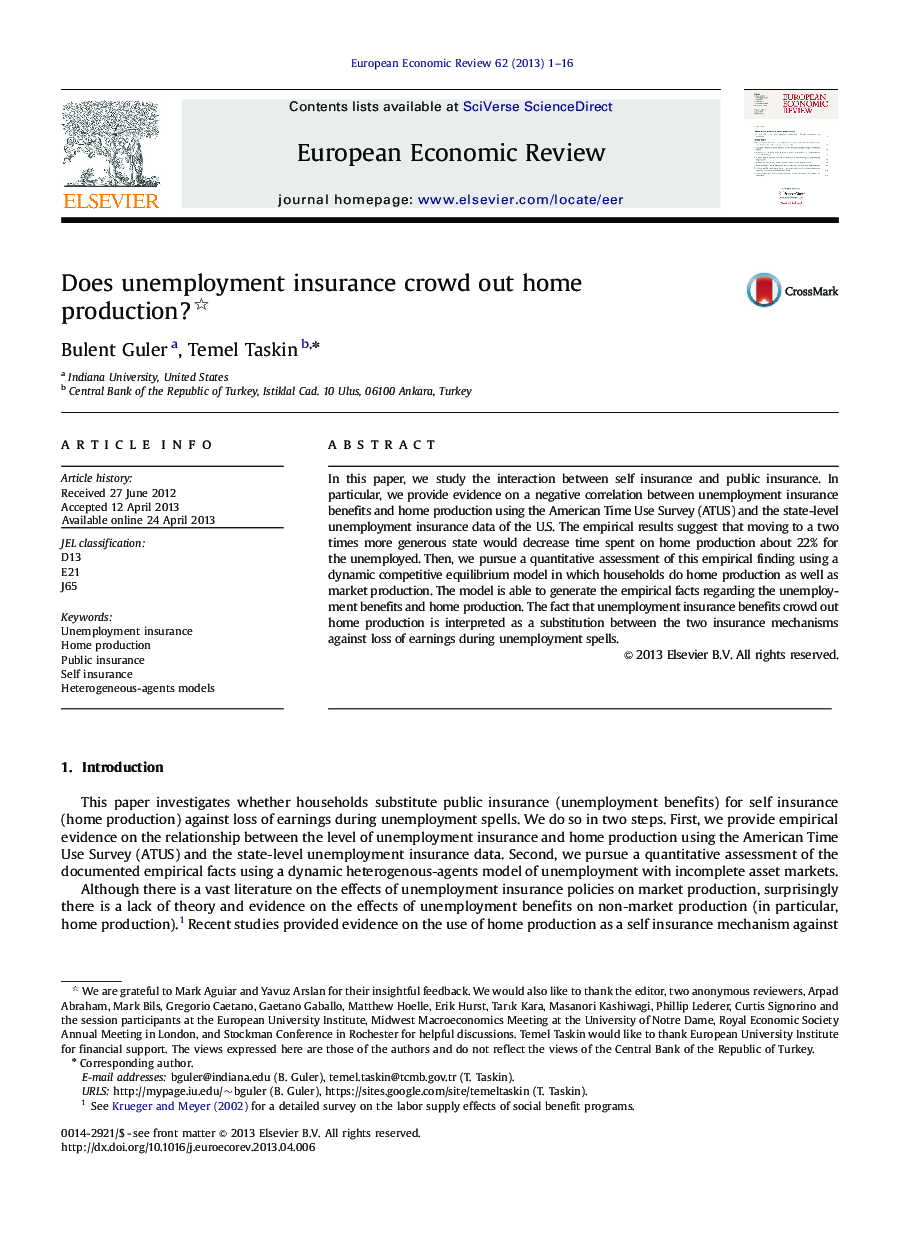| Article ID | Journal | Published Year | Pages | File Type |
|---|---|---|---|---|
| 5066940 | European Economic Review | 2013 | 16 Pages |
•We study the interaction between self-insurance and public insurance.•In particular, we focus on home production (HP) and unemployment insurance (UI).•Doubling UI benefits is associated with a 22% decline in HP in the U.S. data.•A heterogeneous-agent model matches the empirical facts regarding HP and UI.•We interpret the results as a substitution between UI and HP.
In this paper, we study the interaction between self insurance and public insurance. In particular, we provide evidence on a negative correlation between unemployment insurance benefits and home production using the American Time Use Survey (ATUS) and the state-level unemployment insurance data of the U.S. The empirical results suggest that moving to a two times more generous state would decrease time spent on home production about 22% for the unemployed. Then, we pursue a quantitative assessment of this empirical finding using a dynamic competitive equilibrium model in which households do home production as well as market production. The model is able to generate the empirical facts regarding the unemployment benefits and home production. The fact that unemployment insurance benefits crowd out home production is interpreted as a substitution between the two insurance mechanisms against loss of earnings during unemployment spells.
